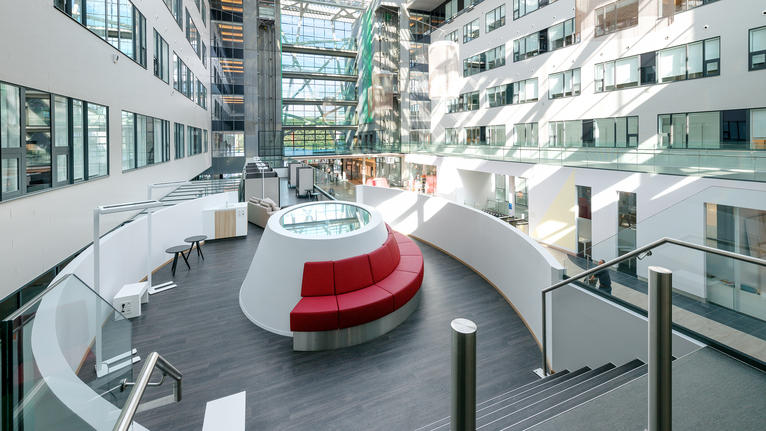
3 Ways to Face Cost Pressure in Hospitals with a Long-term Perspective
Healthcare Management teams and Staff need to cope with strong cost pressure in their day-to-day activities. Facing this challenge is crucial to stay up to speed in a very competitive sector. However cost pressure isn’t only about spending as little money as possible on good quality materials, it also has to do with wellbeing, which may seem like a less immediate way to save money. However, thinking about facing cost pressure with a long-term perspective is profitable for the Health care facility but also for the staff and as a result, for the patients themselves.
Here are 3 ways to face cost pressure in a positive and durable way:
Reducing maintenance costs
Highly durable floorings can contribute to reducing overall maintenance costs because of their easy cleaning protocol: less energy, water and cleaning chemicals are needed, which also reduces the time needed to clean the floors. For instance, Tarkett’s homogenous vinyl products are guaranteed 10 years and can last up to 25 years. They are highly resistant to abrasion and stains, allowing you to reduce maintenance and cleaning costs by 24 to 30%, as proven by Tarkett’s life cycle analysis (see below). What makes these products so resistant and easy to maintain is Tarkett’s surface treatments. In 1975, Tarkett invented the PUR surface treatment [1], a milestone in the flooring industry. Since then, Tarkett has kept innovating to create new generation surface treatments. Today, our homogeneous and heterogeneous vinyl solutions are available with a surface treatment that makes for high durability:
- Tarkett’s iQ homogenous vinyl solutions require no strip, polish or wax. With its unique dry-buffing properties and proven durability, iQ has become the benchmark in healthcare. If the purchase price is higher than rival products’, this is more than offset by lower maintenance costs, with payback in under 3 years versus polished flooring in a hospital of 10,000m2 floorspace.
- Our TopClean XPTM has reinforced PU coating for heterogeneous vinyl to improve scratch and abrasion resistance.
[1] Source: Tarkett 1886-1986, 100 years, Printing: Esselte Wezäta 1985, Editor: Ivan Petersson, ISBN 91 7766 0196
The Life Cycle Cost Software
The Life Cycle Cost Software (LCC) is a program developed by Tarkett that integrates purchase, installation, cleaning and maintenance to assess the true cost of flooring over its entire life cycle. With the assistance of one of our experts, this tool evaluates the costs involved when choosing a flooring solution: the initial purchase cost, but also the maintenance and cleaning costs including labour, over a given period of time. The need for additional chemicals or polishes in the maintenance of a product, as well as the labour required to apply these can significantly increase the overall expense of a product.
Staff wellbeing and efficiency
The work of healthcare staff is often demanding, both physically and mentally. A better working environment helps reduce their stress and fatigue.
Making the right choice regarding flooring and wall solutions can not only help reduce maintenance and cleaning costs, but also contribute to staff’s as well as patient’s overall wellbeing. Our flooring solutions offer lower roll-resistance for beds, trolleys and wheelchairs on top of being more comfortable to walk on, thus contributing to a better working environment.
Indeed, when healthcare personnel are comfortable in their day-to-day activities, patients feel they are in a reassuring and good healing environment. Staff’s wellbeing can impact patients’ wellbeing.
Floorings can contribute to patients’ wellbeing
Floorings can help improve patient’s experience in the Hospital in various aspects:
- Good indoor air quality
- Lower levels of noise
- Ease of navigation
- Aesthetics
Improving patients’ experience in the Hospital is intended to help accelerate the healing process and therefore enable hospitals to welcome, provide treatments and contribute to the healing of more patients. The “patient experience” aspect is very important for a hospital’s good reputation as an environment where people are treated well and where everything contributes to healing. For example, competent, patient and pleasant staff strongly contribute to patients’ wellbeing and therefore healing. That is why thinking of wellbeing when looking for cost reduction is a win-win strategy and a smart decision in the long run.